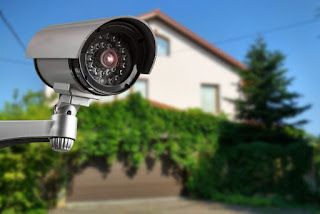Wireless surveillance cameras
Wireless cameras have more flexibility in terms of installation. But the emissions of other devices such as mobile phones, connected devices, and baby monitors can limit or sometimes interrupt the signal of a WiFi camera. On the other hand, if you decide to buy a wireless system, the video stream may be intercepted by others. If you are worried about your personal safety and privacy, check with the brand if there is encryption on their WiFi system.
Standard cameras like Digoo wireless camera are visible. Usually installed outdoors, they are a clear indicator of whether your property is under video surveillance. You can also find smaller surveillance cameras. This allows to hide them in decorative objects for example.
The legal aspect of the surveillance camera
Before installing any type of surveillance system at home, especially outdoors, you must note the legal restrictions on video surveillance. In France, you do not have the right to film and record public places. Of course, it is from here that there is the best. But the law is the law ... If someone discovers a camera filming the public road, you can easily pass for a big bad guy, and there are the courts. Yes: in France, it is the burglars and the people who have things to reproach themselves who is right ... Debate useless.
Install your surveillance camera
After determining the area (s) that will be monitored, it is important to properly configure the security system. For the best installation and configuration, read the user manual. Doing things randomly is the best way to have a non-functional system. A bad installation will not give you any results. For the more cautious if you have never tinkered with electronics, today's cameras are very easy to install. Everyone can do it, including using your smartphone.
Set up your surveillance camera
Camera systems are simple to install and configure. Anyone who can install his equipment all by himself. Installation procedures will vary depending on the model and brand chosen. It is therefore advisable to follow the instructions in the user manual.
The place where you place your surveillance camera is important. The distance of the camera from its subject should be carefully considered. The coverage area of the surveillance camera must be in focus and clearly visible. For example, avoid placing your surveillance camera where its lens would be partially exposed to the sun and another part in the shade. This will hinder the general vision. If you place a surveillance camera on a wall or other structure, make sure the camera is securely attached. The camera must not be shaken in order to avoid distorted images.
For a surveillance camera that fits your needs
You also need to determine whether or not you want to record surveillance images. If you just want to make sure your kids are safe at home, a video stream without recording should be enough. However, nowadays, most surveillance cameras record themselves. If you want to see what's happening in a particular area over long periods of time, you'll need surveillance cameras with recording on NAS, SD card or cloud. Some people also use an NVR or DVR. To avoid using too much space on the memory, some surveillance systems have motion detectors that only start to record that the camera is picking up motion.
There are many video surveillance options available. Choosing the right video surveillance system, therefore, depends on your needs, the architecture of your home, your budget, etc. For specific information, you can leave comments!

No comments:
Post a Comment